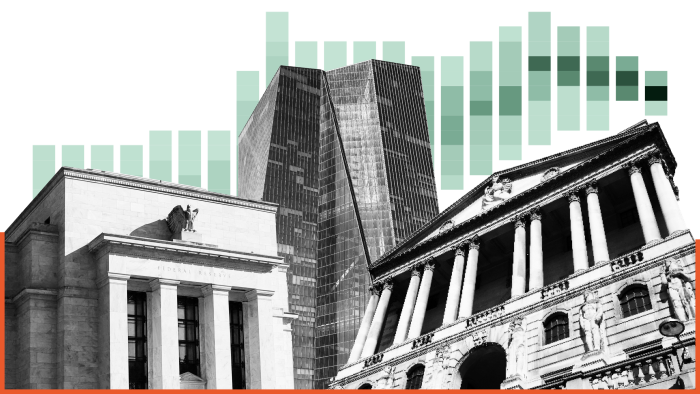Unlock the White House Watch newsletter for free
Your guide to what the 2024 US election means for Washington and the world
Donald Trump’s emphatic victory in the US digs a series of bear traps for central banks to skirt over the weeks and months ahead. The coming change in the US administration presents something of a crisis for monetary officials. Given the uncertainty of the electoral outcome beforehand, no central bank — not in the US, Europe, Japan or emerging economies — could position for the Republican triumph. None have set policies accordingly. They will need to show once again that they are good at adapting to events.
At first, institutional safeguards and well-worn scripts are available for unexpected outcomes such as this. We can expect a display of respect for the Bank of England’s price stability mandate when it announces interest rates at lunchtime in Europe on Thursday and next to no comment on the US election. Governor Andrew Bailey is likely to use lower inflationary and wage pressures to justify a quarter-point rate cut in the policy rate. Bailey will aim to sound boring.
This act is set to be replicated a few hours later in Washington at the Federal Reserve. Chair Jay Powell is poised to cite progress on inflation as the reason behind the Fed’s own quarter-point cut. The policy-setting Federal Open Market Committee is doing its duty to secure maximum employment and stable prices, he will say.
Fortunately, for both the Fed and the BoE, their words and actions reflect reality. Their immediate decisions are nothing to do with Trump and certainly reflect their desires to adhere to their mandates.
Less fortunate in this respect is the Bank of Japan, which explicitly said at its meeting last week that it would “pay due attention to developments in financial and foreign exchange markets” in setting rates. The yen weakened 1.7 per cent to ¥154.3 to the dollar after the election results came in, putting the central bank under more pressure to raise rates again, probably sooner than officials in Tokyo really wanted.
Mandates and conventions also protect central banks if asked how they will respond to a Trump presidency. They are bound to say they cannot set monetary policy on the basis of hypotheticals and need to wait to see the new administration’s policies. These tactics, of course, avoid key issues that may be worrying everyone else and will prove frustrating to watch in press conferences. But appearing calm and sticking to a mandate is a key benefit of economic institutions that can provide stability at a time of uncertainty and turmoil.
Where central banks are most exposed, however, is in their economic modelling capabilities. If Trump uses his widespread new authority to impose tariffs at 1930s levels, deport immigrants en masse and radically cut taxes as he has promised, economic models are extremely poor at dealing with such large shifts. They are based on data in periods of relative calm and struggle to cope with the consequences of more tumultuous times.
If they rely on their main models, central banks risk being blindsided by the possible world of geopolitical tensions, vicious trade wars and a president intent on having a say in Fed decisions, vastly underestimating the potential repercussions.
The IMF, for example, last month produced a forecast scenario suggesting that large US tariffs, low migration, global trade tensions and nervous global financial markets would push inflation a maximum of 0.2 percentage points from the main path predicted in the US, Europe, China or the world. That suggests Trump’s policies are, at most, the equivalent of a bad forecasting miss on a piece of monthly inflation data. We know that is nonsense because supply chain disruptions after Covid-19 pushed US inflation up from close to the 2 per cent target in early 2021 to 7.2 per cent in June 2022.
More from Monetary Policy Radar

See more articles from Monetary Policy Radar, a new product from the FT, which has been designed to boost investors’ confidence and help them anticipate future monetary policy decisions.
The biggest bear trap of all, then, for central banks will come when Trump uses his powers extensively. Officials need to be clear-eyed about his policies that are broadly inflationary whether they are tax cuts or tariffs.
Central banks broadly got away with failing to foresee and counter an inflationary episode in 2021 with a belated, but forceful, response. The coming period is more dangerous. Trump is likely to attack the Fed if it seeks to counteract his policies or if inflation takes off again — whether this is fair or not.
And in the rest of the world, the public will be much less understanding of central banks that lose control of prices for a second time in five years even if they cannot control events. Institutional defences can only shield officials so far. If Trump is serious about his economic proposals, a more troubled period lies ahead for central banks.
chris.giles@ft.com
Letter in response to this article:
Counterfactual — what if Fed had curbed inflation? / From Andrew Dean, Paris, France
